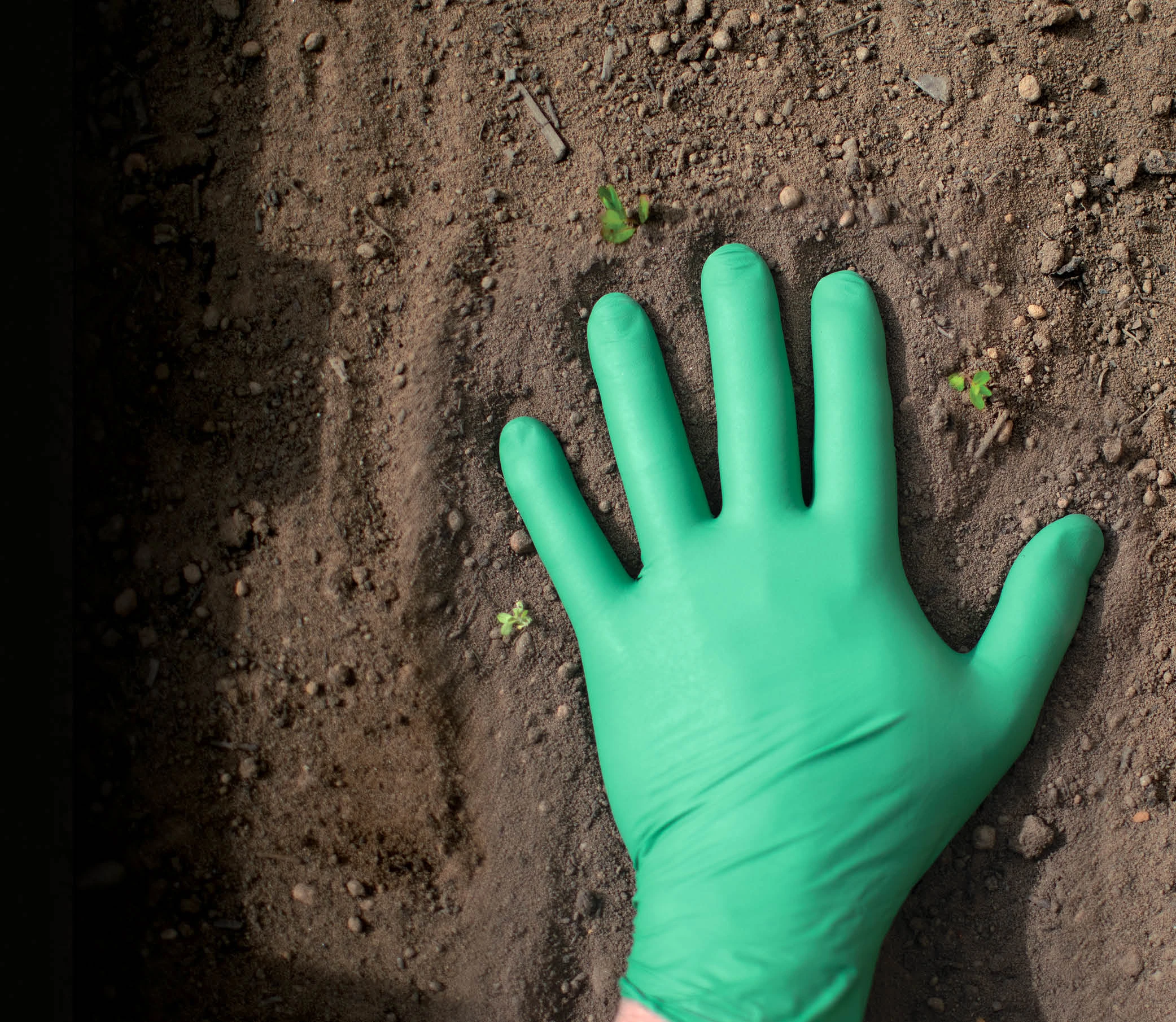Navigating the "Green World"
Sustainable Product Innovations That Perform, Fit and Feel Like Their Counterparts, But Are Much Healthier for the Planet!
In December 2019, First Insight (a world leader in predictive analytics) surveyed consumers in the U.S. on how s ustainable practices are impacting their shopping habits and purchase decisions. The results showed the growing expectation for sustainable goods, as the current generation makes purchases dependent on the environmental ethics of how a product is manufactured.
ustainable practices are impacting their shopping habits and purchase decisions. The results showed the growing expectation for sustainable goods, as the current generation makes purchases dependent on the environmental ethics of how a product is manufactured.
One way to be more sustainable is to reduce landfill waste, eliminate products made with PFAS, and microplastics that leach harmful BPA’s. Consider replacing petroleum based or poly plastics with biodegradable and compostable plant-based PLA products at your facility today. Also available are bio-based and recycled fiber technologies that utilize stockpiles of useless recycled P.E.T. water bottles.
Shredded and extruded as a fiber then blended with recuperated polyester yarns, this recycled yarn technology is used in the knitting processes of industrial protective sleeves and work gloves.
If you are searching for Eco-friendly personal protection equipment (P.P.E.) or disposable food catering supplies, there have been many sustainable product innovations launched to reduce landfill as billions and billions of plastic type items are disposed yearly where it can break down into toxic microplastic.
The “Green World” can be overwhelming. With so many buzz words and phrases it’s hard to keep track of the many eco-terms used in today’s marketplace. We thought it would be a good to define some everyday words and lesser known terms and share them with you so you can better navigate towards a healthier world.
ECO-TERMINOLOGIES
•Recyclable
Recyclable waste or materials can be processed and used again. Kept separated, dry card or paper can be recycled. So can plastic bottles, glass or metal drink cans. But used disposables are often a mix of card, plastic, food and contamination is often inevitable. This combination creates massive recycling challenges often resulting in incineration or landfill unfortunately.
•Biodegradable
Biodegradable means something breaks down or decomposes naturally by microorganisms such as bacteria, fungi or other living organisms in an ecosystem, but it can take years. Unless a product is certified or validated (see GreenCircle® below) , biodegradable often tells us nothing about timescales. Note: New additives to nitrile compounds are allowing treated gloves to break down, or biodegrade, in natural elements such as landfills at much faster rates (see below).
•Compostable
Compostable means something can disintegrate into non-toxic, natural elements at a rate consistent with organic materials typically in less than 12 weeks. Commercial composting is a human driven process that creates the perfect balance of microbes, moisture and warmth. So instead of being buried or burnt, compostable “waste” creates nutrient-rich compost that helps plants thrive through microbial activity. Look for products certified to the composting standard ASTM D6400 (see ASTM D6400 below).
Think of both compostable and biodegradable as recycling organic waste using naturally occurring or biological processes. The main difference between the two is that biodegradable material can take an undetermined time to break down.
•Zero Waste
Zero waste is defined by the Zero Waste International Alliance (ZWIA). It is the process of avoiding consumed or recovered products that create waste and contribute to landfill, incinerators and waste discharge into nature that threaten the environment or human health.
•Zero Emissions
Zero emissions (also sometimes described as ‘zero carbon’) means exactly what it says: the business or activity produces no greenhouse gas emissions to the atmosphere - that is no carbon dioxide, no methane, no nitrous oxide.
•Carbon Neutral
Over the centuries, human activities have triggered global warming and climate change by releasing carbon emissions into our atmosphere. In an attempt to combat the damage done, businesses committ to offset the carbon emissions they create through daily operations with efforts to absorb carbon from the atmosphere. Carbon neutrality only exists when there's a balance bewteeen the greenhhouse gasses produced and he removal of those gasses from the atmosphere, primarily through carbon sinks such as forests (planting trees), oceans and soil or engineered sinks like direct air capture or carbon capture and storage.
•Carbon Footprint
The carbon footprint (or greenhouse gas footprint) serves as an indicator to compare the total amount of greenhouse gasses emitted from an activity, product, company, or country. Carbon footprints are usually reported in tons of emissions (CO2-equivalent) per unit of comparison. For a product, its carbon footprint includes the emissions for the entire life cycle, from the production along the supply chain to its final consumption and disposal. Similarly for an organization, its carbon footprint includes the direct as well as the indirect emissions caused by the organization
•Sustainability
Sustainability is a social goal pertaining to the ability of people to inhabit the Earth well into the future. Sustainability often focuses on countering major environmental problems, including climate change, loss of biodiversity, loss of ecosystem services, land degradation, and air and water pollution.
•Greenwashing & Green Guides
With increasing demand for eco-friendly products, some manufacturers label products as "biodegradable", as this requires no certification. Manufacturers may get away with this term even when it takes years or decades to fully break down. This is known as "greenwashing". Environmental benefits are implied but the claims don’t match what the consumer believes they’re getting. In response, the Federal Trade Commission (FTC) produced their “Green Guides” in an attempt to prevent marketers from making misleading claims. “Green Guides” provide guidance on environmental claims specific to biodegradability:
- (a) prohibits unqualified degradable claims for items destined for landfills, incinerators, or recycling facilities because decomposition will not occur within one year;
- (b) degradable claims should be qualified clearly stating the ability to degrade in the environment where it is customarily disposed and the rate and extent of degradation.
For compostable and biodegradable claims, manufacturers must have scientific evidence demonstrating that all materials become usable compost in a timely manner.
BIODEGRADABILITY TECHNOLOGIES
 New treatments to nitrile compounds allow treated gloves to break down, or biodegrade, in natural elements such as landfills at much faster rates than untreated gloves which could be 200+ years. These treatments comply with the Federal Trade Commission’s Green Guide and have been tested and measured for validity by a renowned third party (see Testing & Certification Below).
New treatments to nitrile compounds allow treated gloves to break down, or biodegrade, in natural elements such as landfills at much faster rates than untreated gloves which could be 200+ years. These treatments comply with the Federal Trade Commission’s Green Guide and have been tested and measured for validity by a renowned third party (see Testing & Certification Below).
Eco-Best Technology® (EBT) & EcoTek® Accelerated Biodegradability
Showa’s Eco-Best Technology® (EBT) and SW® Sustainable Solutions EcoTek® technologies accelerate the biodegradation of nitrile in biologically active landfill without altering the protective nature or shelf life of the glove, nor will it begin to biodegrade prior to disposal.
These sustainable gloves do not leave any toxic residue behind and will not contaminate ground water or the environment as validated by third-party testing using test method ASTM D5526-12 - a standard test method for determining anaerobic biodegradation in accelerated landfill conditions.
How It Works
When disposed in landfills, proprietary organic additives are added to the nitrile formulation during processing designed to make the glove attractive to microbial activity in a landfill and therefore deteriorates in landfills over a much shorter time than untreated gloves. Upon consumption of the formulation, micro-organisms excrete enzymes that break down the nitrile leaving zero waste behind.
TESTING & CERTIFICATION
For compostable and biodegradable claims, manufacturers must have scientific evidence demonstrating that all materials decompose in a timely manner. When we see the terms biodegradable or compostable on a product label, we should look for one more thing: a testing certification.
•ASTM D5526 and ASTM D5526 Biodegradable Standards
These two testing methods are respected and accepted tests for determining anaerobic biodegradation of plastics in accelerated landfill conditions. The major difference between the two methods revolves around the length of time. The ASTM D5526 mimics landfill conditions and is the more reliable test of the two that can be run for as long as required to establish the time it takes for a glove to break down.
The ASTM D5511 test measures biodegradation under ideal landfill conditions in a laboratory. Typically a shorter test, D5511 is traditionally 30 days long and is frequently used as a "stand-in" while the longer ASTM D5526 test is being conducted. ASTM International forbids extrapolating the final biodegradation percentage and timeline from this D5511 test because it can send a false sense of security.
•ASTM-D6400 Compostable Standard
Compostable packaging needs to be in composting conditions in order to compost. For PLA to compost, one must break up the polymer by adding water to it (a process known as hydrolyzing) and for hydrolyzing to occur, heat and moisture are required. The most widely used compostability standards are the American ASTM D6400 and the European EN13432 and include the following elements:
1. Biodegradation - materials turn to soil through microbial action at the same rate as cellulose (paper).
2. Disintegration - the materials fall into small pieces.
3. Eco-toxicity - seeds can germinate in the resulting compost - ie it is useful for plant growth.
4. Heavy metals - the compost is safe to go onto land.
We are dedicated to promoting biodegradable and environmentally sustainable products. By working to create a cleaner environment through efforts of earth-friendly technologies, we will strive to work for a better tomorrow. MDS will continue to seek revolutionary products that prioritize the needs of future generations and deliver effective and sustainable solutions to the marketplace. Take the next step in sustainability and consider a healthier choice for our planet. All you need to do is tap the link below to ...
+browse Sustainable Hand & Arm P.P.E. Products here
+browse Compostable Catering Products here
Orders. Questions. Volume Discounts. Samples. Special Requests.
Click or Call
Monday - Friday 8:30am - 4:30pm Eastern Standard Time
+(800) 274-4637 | +(716) 668-4001 | [email protected] | eco-MDSassociates.com | MDSassociates.com
""We Want You to Return Home Safely Every Day"



